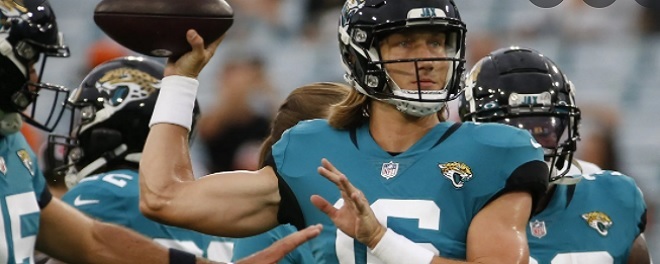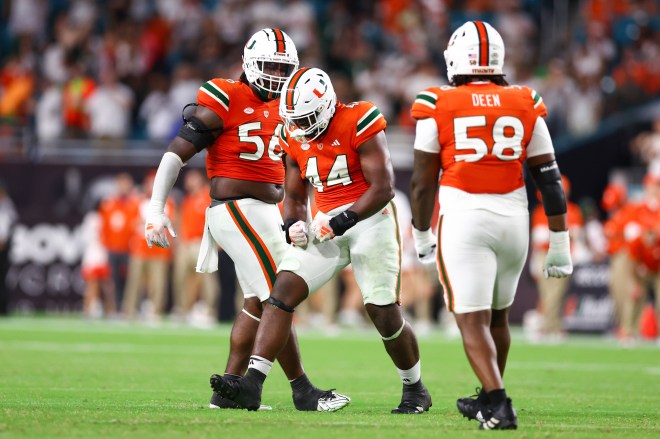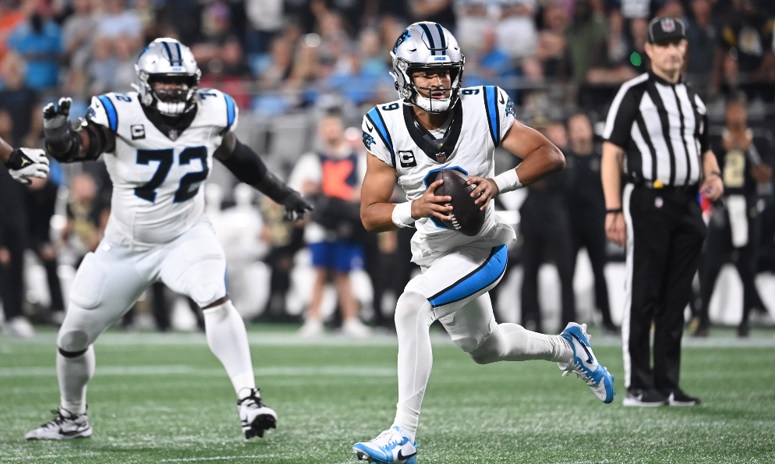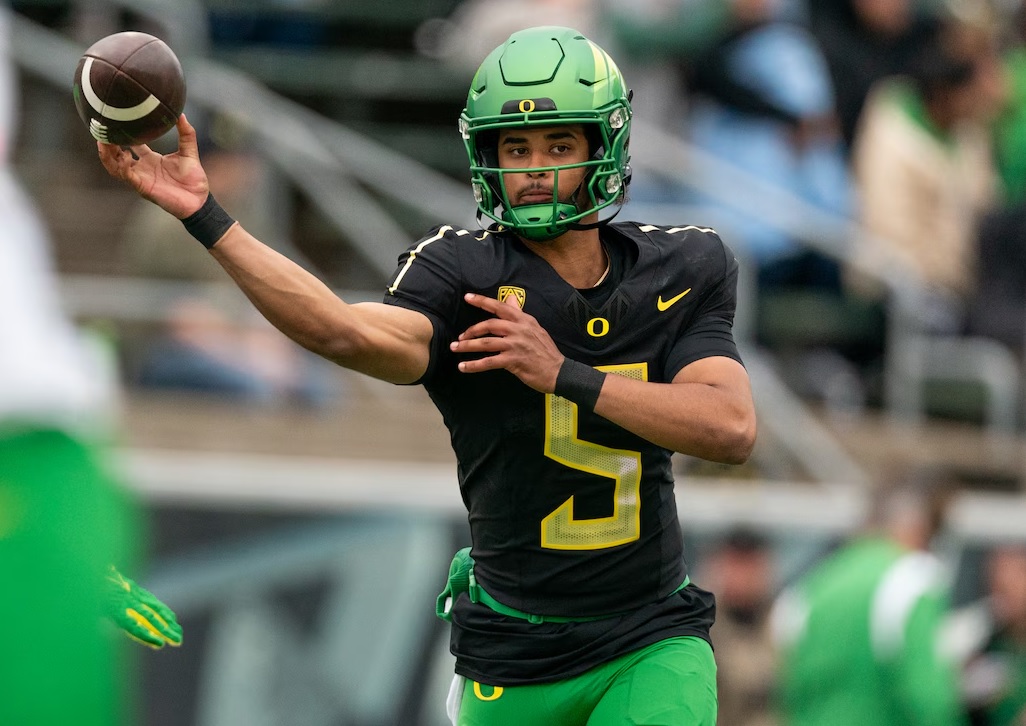Solid Starter
 Garrett Bradbury, C, N.C. State – Round 1
Garrett Bradbury, C, N.C. State – Round 1 
The Vikings had some of the worst center play in the NFL during the 2018 season, and their weak offensive line played a significant role in Kirk Cousins disappointing during his first season in Minnesota. Upgrading the line was a point of emphasis for the 2019 NFL Draft, and Bradbury is a plug-and-play solution to the problems at center.
Bradbury’s top traits are his athleticism and quickness at the point of attack. He is agile to get to spots and displays the athletic ability to put himself in position to hit blocks that other centers are unable to do. In pass protection, that athleticism comes through with him being an asset to execute double teams or pick up blitzes.
Bradbury is an intelligent blocker with good technique. He plays with good leverage and can anchor against some bull rushes. Bradbury is not a dominating pass blocker and can give up some pressures, but on the inside of the line, he is pretty reliable. Bradbury is not a center who a team would want to have isolated on an elite nose tackle who has a lot of power. He would be better off working in tandem with a guard against a large, heavy nose tackle.
As a run blocker, Bradbury is a leverage lineman who does a nice job of getting into defenders and using developed upper body strength to sustain blocks. Bradbury is a tough, physical, has some attitude, and blocks through the whistle. He does a nice job of hitting combo and bump blocks with his guard, getting on the hip of defensive tackles and helping his guard to open some lanes. Bradbury is not a bull dozer who blasts defenders off the ball to knock them out of their gaps. He is not a road-grader and is better when he works in tandem with a guard.
Bradbury has some size limitations, such as lacking height and having short arms. Given his size, he is probably going to be limited to center in the NFL. He could play guard in a pinch if there is an injury in game, but he is not a good fit to be an every-down starter at guard given his short height, arms, and weight. However, Bradbury has special athletic ability and quickness to function in the middle of the line at center.
Bradbury should be an upgrade at center for 2019 and help protect Cousins and contribute to better rushing lanes for Dalvin Cook. Quickly in his NFL career, Bradbury should be a solid starter for Minnesota.
2018: Daniel Carlson, K
2017: Pat Elflein, C
2016: Laquon Treadwell, WR
2015: Trae Waynes, CB
2014: Scott Crichton, DE
2013: Xavier Rhodes, CB
Most Likely To Bust
 Dru Samia, G, Oklahoma – Round 4
Dru Samia, G, Oklahoma – Round 4 
I typically refrain from choosing players who are selected after the second day of a draft for most likely to bust because less than 50 percent of third- or fourth-round picks pan out in the NFL. Thus, it really isn’t much of a bust if one of those picks doesn’t work out. I didn’t see real bust potential in the Vikings selections on Days 1 and 2. Even with the longer odds, Samia really stood out to be as having the potential to be a wasted pick.
Sources from other teams had Samia graded as a late-round pick, and he was a reach in the fourth round. Those evaluators feel that Samia lacks power and is not overly athletic. To have any shot at sticking in the NFL, Samia probably has to move to center, but that position is locked down by first-round pick Garrett Bradbury. I think Samia could stick around as a backup guard for some time, but I could see Minnesota eventually moving on to a player who has starting potential.
2018: Brian O’Neill, OT
2017: Ben Gedeon, LB
2016: Willie Beavers, OT
2015: Danielle Hunter, DE
2014: Teddy Bridgewater, QB
2013: Cordarrelle Patterson, WR
Potential Boom Pick
 Irv Smith Jr., TE, Alabama – Round 2
Irv Smith Jr., TE, Alabama – Round 2 
Irv Smith Jr. has the potential to be an instant contributor for Minnesota, which needed more production out of the tight end position via a mismatch receiver in the passing game. After his final season in Alabama, Smith looks capable to make a quick impact in the NFL. The Vikings are expected to move on from Kyle Rudolph, and that could push Smith into an immediate starting role.
As a pro, Smith has the potential to be a mismatch receiving tight end who produces some big plays for his offense in the passing game. He is a good route-runner with quickness, athleticism and feel. Smith is too smooth of a route-runner for linebackers to run with, and he has enough size to make catches over defensive backs. He tracks the ball well downfield and shows late hands to make the catch even when defenders are close. Due to his quickness and athleticism, Smith is dangerous with the ball in his hands to rip off more yardage after the catch. Team sources have said that Smith has only one playing speed and wish he had a second gear.
As a blocker, Smith is undersized and needs to get stronger to be more effective against NFL defenders. His motor in the blocking game is not always steady, and he could stand to improve the effort or fight he exudes when he blocks. As a pro, Smith is never going to be a great blocker, as his size limitations are going to hold back what he can do against defensive ends and linebackers.
In the NFL, Smith could be a good F – movement – tight end to contribute to a passing attack. However given his size and blocking limitations, he will have to work in a platoon with a Y – blocking – tight end. Still, Smith brings lots of versatility because he has and can line up as an h-back and wide receiver. He can serve as a chess piece who can be moved around to create mismatches for his offense. Smith could be a Jordan Reed-like weapon for Kirk Cousins, and Smith has boom-pick potential for Minnesota.
2018: Mike Hughes, CB
2017: Dalvin Cook, RB
2016: Mackensie Alexander, CB
2015: Eric Kendricks, LB
2014: Anthony Barr, LB
2013: Sharrif Floyd, DT
Future Depth Player
 Alexander Mattison, RB, Boise State – Round 3
Alexander Mattison, RB, Boise State – Round 3 
Adding a talented backup running back was an important need for the Vikings to address as their offense is very dependent on a potent rushing attack due to the limitations of quarterback Kirk Cousins. Dalvin Cook has the potential to be one of the best running backs in the NFL over the next few seasons, but Cook also has had injuries and they need more talent behind him in case he goes down for an extended period of time. Mattison could be a really good backup for the Vikings. The 5-foot-10, 221-pound Mattison was a workhorse for Boise State in 2018, toting the ball 302 times for 1,415 yards – 4.7 average – and 17 touchdowns. He also showed some nice receiving ability with 27 receptions for 173 yards. Sources at other teams said they were really impressed with his combine workout as well.
With the Vikings, Mattison does not have much backup competition, and his status as a third-round pick will push him into that role. I think he gives the Vikings a good backup who could be a starting-caliber player.
2018: Jayln Holmes, DE
2017: Bucky Hodges, TE
2016: Kentrell Brothers, LB
2015: Stefon Diggs, WR
2014: Jerick McKinnon, RB
2013: Michael Mauti, LB
Walt’s 2019 NFL Draft Grades:
18. Garrett Bradbury, C/G, N.C. State B+ Grade
I’ve slotted Garrett Bradbury to the Vikings for several weeks, so I wouldn’t have been surprised by this pick heading into the 2019 NFL Draft. However, I expected them to choose Andre Dillard when he slipped to them. Minnesota apparently wanted to stick to the plan and upgrade the middle of the offensive line. Pat Elflein was the worst center in the NFL last year, so he absolutely needed to be upgraded. Elflein will now move to guard, where he should perform better, meaning the Vikings are getting two upgrades with one pick. This is a good choice, as the Vikings absolutely had to bolster Kirk Cousins’ protection.
50. Irv Smith Jr., TE, Alabama A Grade
I thought Irv Smith Jr. would be chosen earlier than this, so I like the value. But what about the need? The Vikings have Kyle Rudolph on the roster right now, but he’s an impending free agent after this season. Smith can develop for a year behind Rudolph and then become a nice weapon for Kirk Cousins in 2020 and beyond.
102. Alexander Mattison, RB, Boise State C Grade
Alexander Mattison was pegged as a fifth-round prospect, so this is a bit of a reach. It’s not an egregious one, so this isn’t a bad choice. Mattison is a solid runner who catches passes well. However, he’s not explosive and doesn’t possess much upside. The Vikings needed to find a capable backup behind Dalvin Cook, and Mattison could develop into a fine No. 2 back.
114. Dru Samia, G, Oklahoma B+ Grade
Dru Samia is someone who could have been chosen a bit earlier than this. I had him slotted at the end of the third round. He doesn’t have good athleticism, but he’s a rock-solid guard who should be able to emerge into the starting lineup at some point in the near future.
162. Cameron Smith, LB, USC C Grade
I don’t understand this pick. The Vikings have struggled to cover in space for quite some time, so they needed to find a linebacker who could help them solve that problem. Instead, they drafted a player who struggles to cover in space. Cameron Smith is a tough run defender who can play well on the first two downs of a game, but he doesn’t solve any of Minnesota’s issues.
190. Armon Watts, DT, Arkansas A- Grade
Armon Watts was a solid producer at Akrnasas, but tested poorly at the combine. I thought he would be chosen earlier than this – I had him at No. 143 overall – so I like the value the Vikings are getting, as they had to bolster the depth on their defensive front.
191. Marcus Epps, S, Wyoming D Grade
Marcus Epps was projected to be a UDFA target. I don’t think the Vikings should’ve wasted a sixth-round pick on him. With all of the extra selections in Rounds 6 and 7, I was hoping they would turn them into 2020 choices. That’s what should’ve happened here.
193. Oli Udoh, OT, Elon A- Grade
The Vikings predictably continued to address their offensive line. They needed a tackle, and Oli Udoh has ridiculous upside. He’s a massive tackle (6-6, 323) and he tested very well at the combine. He’s a project, as he’s a raw player right now, but if coached up, he could become a starter at some point.
217. Kris Boyd, CB, Texas A Grade
Kris Boyd offers more value than the other two picks of the seventh round. Boyd could’ve gone as high as the fourth round without any criticism, so this is a nice bargain for the Vikings. Boyd is a project, as he lacks discipline and good technique, but he has great upside because of his athleticism. Boyd may not pan out – it’s the seventh round, after all – but I love how high his ceiling is.
239. Dillon Mitchell, WR, Oregon B+ Grade
Dillon Mitchell lacks strength, route-running ability and sure hands, but he’s quick and athletic enough to develop into a viable receiver in the NFL. He was highly productive last year, but still needs to be coached up. It’s possible that Mitchell evolves into a No. 3 receiver for the Vikings, but he has a long road ahead of him. The upside is there to warrant a seventh-round pick, however.
247. Olabisi Johnson, WR, Colorado State B Grade
Olabisi Johnson is a hard worker who has overachieved in his career thus far. We’ll see if that will continue in the pros. Johnson has some separation questions heading into the NFL, but he tested well at the combine, so perhaps there shouldn’t be much concern in that regard.
250. Austin Cutting, LS, Air Force C Grade
I’ll be honest with you: I don’t look into long snappers at all. Players who snap the ball farther than other players can be found anywhere. I’d normally criticize a team for wasting a pick on a long snapper, but not really this late in the draft.
2019 NFL Draft Team Grade: B . Follow Walter @walterfootball for updates.
Cincinnati Bengals Season Preview
NFL Power Rankings - Dec. 23
NFL Picks - Dec. 22
2026 NFL Mock Draft - Dec. 17
Fantasy Football Rankings - Sept. 1




